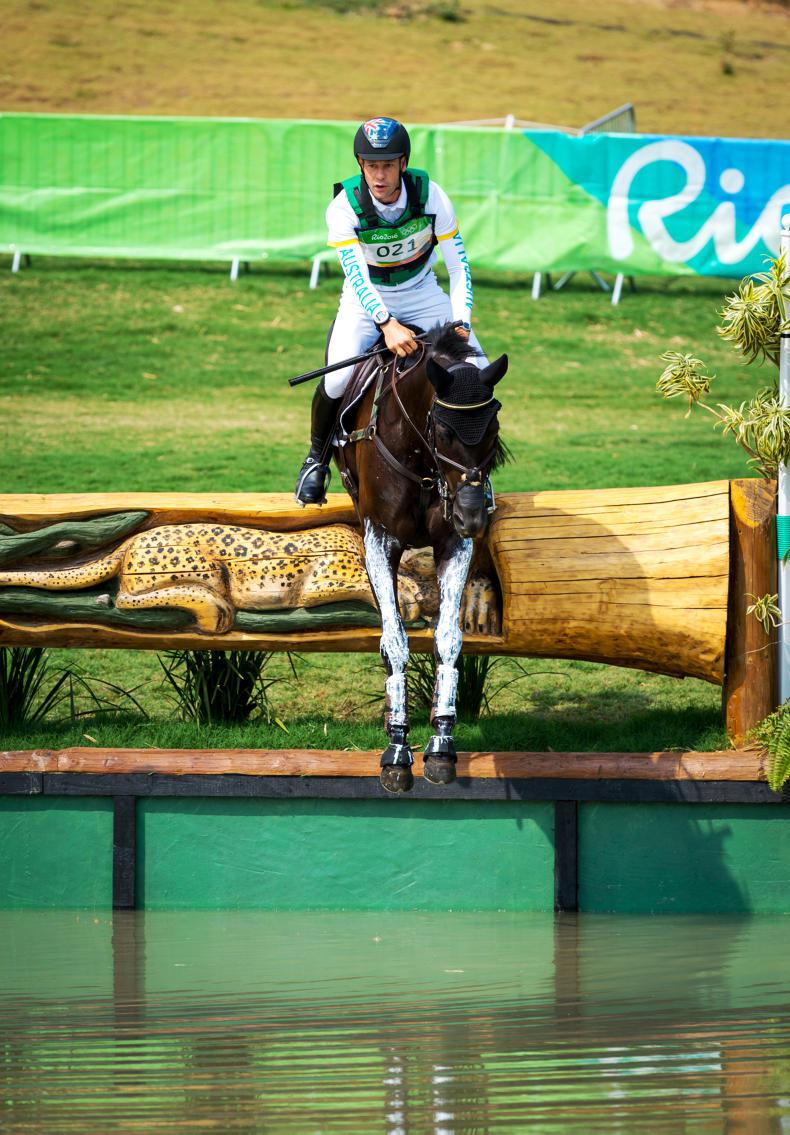BREEDING trends can change more frequently than in an equine generation timeframe. Or in just one meeting, as seen by the fallout from the FEI General Assembly in Tokyo last year, which may prove to be a Games-changer for future sport horse breeding trends.
Those international riders that have spoken out against the rule cite the impact the FEI’s decision to focus on future teams of three will have, not just on them, but on breeders too. A narrowed-down Games field will also impact on those at the top of the sport horse world pyramid - the owners, who want to see their horse compete for Olympic glory and whose buying power trickles down to breeders.
An extra emphasis on breeding for soundness is one trend that could emerge from the Olympic change, with some tense moments at the Rio Olympics horse inspections and last-minute changes, due to horse injuries, to ensure a team score. On the flip side, that worked in the Irish Sport Horse studbook’s favour when a call up for Philip Dutton’s reserve horse Mighty Nice resulted in the Cavan-bred winning an individual bronze medal.
Modern trends point to breeding specialised horses for particular markets. One of the most interesting Rio pedigrees was that of the Australian eventing team horse, the Sandro Hit-sired Santano II, bred on dressage lines and at one stage in contention for an individual gold medal. The eventual champion was of course La Biosthetique Sam, a horse of more conventional eventing breeding with his 76.17% thoroughbred background.
That said, the other individual medal horses Piaf De B’Neville (57.42%) and Mighty Nice (42.38%) were not found lacking either, despite their ‘lack’ of blood. Although in Mighty Nice, a horse that bucks modern breeding trends as being by a non-fully approved stallion out of an unrecorded dam, there may well be more unrecorded thoroughbred blood in the ancestral tank than his estimated reading.
The need for thoroughbred blood for four-star horses was continually made by riders after the toughest Olympic cross-country course since Sydney. Pippa Funnell was one who pondered afterwards about the shortage of four-star horsepower in the UK capable of such a course. UK event breeding trends have seen a move to warmblood influences for the dressage and show jumping phases, however the relatively few German breeders, specialising in event horses, have reverted back to one thoroughbred cross in the immediate pedigree.
Eventing is also the sport that observers feel is most at risk amongst Olympic equestrian sports. A one-size Olympic arena fits all show jumping and dressage competitions, however the additional expense of a cross-country course and the high-risk nature of the sport see it as the one most likely to be eliminated and in turn diminish the need for breeding potential four-star horses.
Another talking point at Rio was the influence of the water jump during the opening show jumping round when 20 horses had faults there. The powerful upward trajectory of the modern show jumper was felt to be a factor, but how do breeders and trends allow for that - or is an easier option to remove the water jump entirely from future championships?
Leading the way at Rio, with 17 KWPN-registered horses, was the Dutch studbook which has always been ahead of the pack when it comes to breeding trends. As are their neighbouring rivals, the BWP and SBS studbooks that have also tapped into the demand for the catlike athletes now required for modern show jumping courses.
So what are the current breeding trends for producing these horses? Olympic calibre stallions and breeding from strong mare lines with a high strike-rate of performers in families is a well established trend on the continent and one that is growing in Ireland.
Quick returns required through sales results and success in young horse championships is another factor. The most common trend amongst Irish breeders was to sell their product as foals, often to three-year-old owners who, in turn, had sold their stores to ridden horse producers.
While that chain continues, it has brought with it a move to producing commercial continental foals as opposed to the less in-demand traditional stores. While traditional-breds are in demand at the ridden stage, the current trend is that breeders may have to keep youngstock until then, one that less breeders are prepared to do.
CHANGING PROFILE
The Irish breeder profile is another changing trend. Historically, Ireland was a nation of farmer-breeders, whose pragmatism and inate horse knowledge blended well with breeding horses. This applied equally in the sport horse and thoroughbred worlds. The emergence of professional breeding operations, that compare with market rivals, is both a mark of progress and a sign of confidence in the breeding sector by such investment. Large scale investment deserves large scale reward.
However, the gradual reduction of the farmer-breeder, older generations and those who simply “got out of horses” but brought something to the table while they were breeding horses, is a regretful trend.
Focussing on headline making sales prices can deflect away from the middle market, some of whom resent hearing that their product isn’t what the market requires, even when they followed commercial breeding trends. William Kells, Mighty Nice’s breeder, said it best in a video produced last year when he won the WBFSH eventing breeder award, as he summed up in a few words how the ordinary breeder was struggling and how he hoped that his award would bring them some encouragement.
“Breeding horses is like farming, it’s in the blood. It may not always make sense to a businessman but it’s in the blood,” he said this week, when discussing his 2017 breeding plans (see A46).
A comparative handful of breeders worldwide will breed an Olympic or four-star horse. It’s the dream. The reality is breeders, producers and riders will make a consistent turnover from lower level horses, particularly those suited to the lucrative wealthy amateur market and the village of trainers and staff that go along with that.
Stallion inspections and the WBFSH young horse championships are often a signpost to the next generation of performers - the 2016 rankings now relate to covering choices made 10-15 years ago - and it was interesting to see how the pedigrees of young hopefuls at recent continental stallion inspections often have those household stallion names now appear back in the third and fourth generations. Spotting the ‘next big thing’ in future sires is a fascinating concept, however breeding trends on the continent vary from Irish patterns when it comes to supporting stallion inspection graduates.
Continental breeders are much keener to support young, relatively unproven sires compared to Irish breeders’ hesitation at using anything other than a commercial sire. Jay Bowe’s decision to geld his Kiltealy Ghareeb, a year after the horse passed Stage 1 at the 2015 Horse Sport Ireland inspections and since sold at the Go For Gold sale, is a case in point. Even the most ardent eventing and traditional breeding fan cannot expect a stallion owner to keep a horse, like an exhibit in a display case, if breeding trends demand otherwise.
Similarly, Irish stallion owners can find it difficult to compete when breeding trends point to the ready availability of continental-based sires to breeders here for the price of a straw. Will one future trend be to see fewer stallions being stood in Ireland?
The necessity for breeding for good temperaments in a throwaway society is vital. The art and time taking in ‘nagging’ horses as youngsters is a rarity and luxury now.
Considering the rapid changes in technology that have occurred over the past decade, horse breeding doesn’t move at quite the same pace. It is easier to make changes to breeding trends on paper than in the same timeframe but what the trends of 2027 will be may be a completely different ballgame for a new set of players.


 This is a subscriber-only article
This is a subscriber-only article
 It looks like you're browsing in private mode
It looks like you're browsing in private mode





SHARING OPTIONS: